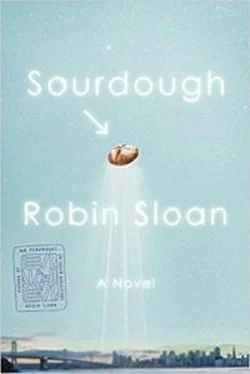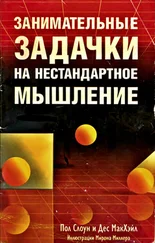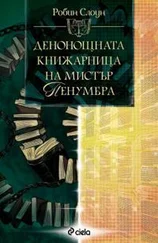Horace raised his hand and expectorated neatly.
“Okay,” Jaina Mitra said. “So there’s a whole lot of things living in a human mouth, and we might want to know what they are. You want to know, don’t you, Mr. Portacio?”
“You have no idea!”
“Biologists have become very interested in communities of microorganisms,” Jaina Mitra said. “Characterizing the community in a sample like this used to be a laborious process, but now—watch.”
Her machine was enormous, as big as a refrigerator, with a round-cornered plastic carapace, glossy white with black accents. A line of letters on the front edge named it the ILLUMINA HYPER CENSUS.
Jaina Mitra pressed a button on its belly and the machine released a tray. She laid the dish of Horace’s spit into place, and when she pressed the button again, the machine pulled the tray back into itself and began to hum.
“What’s it doing?” Naz asked.
“First, it denatures the sample. It heats the microbes up to make them … relax. Then it mashes them up using tiny beads. It’s quite a massacre.”
I raised a finger. “Won’t that mix all the different DNA together?”
“Yes, but they can’t hide. Organisms share a lot of genes, but there’s one that’s unique between species. Sixteen-S. It’s like a fingerprint.” Jaina Mitra grinned wolfishly. “So we’ll pick through the body parts to find the fingertips.”
We all thought about that for a moment while the machine whomped and whirred.
“While it’s mashing,” Jaina Mitra said, “I’ll show you my collection.”
She led us to an enormous refrigerated cabinet stocked with trays, each holding dozens of tiny vials.
“This is why I came here,” Jaina Mitra said proudly. “Mr. Marrow promised me a subscription to the Global Microbiome Survey. It’s not cheap.”
Horace, gravitationally attracted to collections of all kinds, put his face up against the glass. “What do you have in there?”
“Environmental samples. The National Science Foundation sends students all over the world. I did it one summer in grad school. It’s a bit of a boondoggle, really. You pick the wildest place you can imagine. I went to Greenland.”
“You went to Greenland … on purpose,” Naz said.
“It was very interesting, microbially. I sent back huge tubs”—she circled her arms around an imaginary barrel—“full of ice and mud. Rainwater, too.”
“So this is a catalog of puddles,” Horace said. His breath was fogging up the glass.
“Among other things. There’s a bit of the Great Lakes in there. The Great Pacific Garbage Patch. Swamps. Volcanoes. There are samples scraped out of caves, and birds’ nests, and elephants’ armpits. New samples are coming in constantly. I just got one from an Arby’s in Clearwater, Florida.”
We all shuddered.
“How many labs have a subscription like this?” I asked.
“Thirty, thirty-five? Like I said, it’s not cheap.”
“What do you do with it?”
Jaina Mitra’s face took on a hungry look. “Think of it as raw genetic ore. All the subscribers are on a mailing list. When a lab identifies a new species, they send out an alert. I just heard that an organism in the Mono Lake sample has some interesting enzymatic regulation properties, so I’m going to see if I can isolate it and—” The sequencing machine interrupted with a low and commanding chime. “Oh, here we go.” Jaina Mitra tilted the laptop beside the Illumina Hyper Census.
“Anyway,” she said, “let’s hope Mr. Portacio’s saliva isn’t as mysterious as those samples.” On the laptop’s screen, she swiped the cursor with the ease of long practice, summoning the machine’s results.
Horace frowned. “I expect it to be strange and wondrous.”
On the screen, a spiky line appeared, utterly unremarkable. It could have been the price of a stock or the temperature in a midwestern city. Then another layer of information arrived: a label for each of the spikes.
Jaina Mitra read them off: “ Veillonella … Prevotella … Porphyromonas gingivalis , but not too much. Oh, and Streptococcus . That’s what gives you strep throat, but it’s also what they use to make Swiss cheese. You have a very healthy oral microbiome, Mr. Portacio.”
Horace looked disappointed.
Kenyatta was growing agitated. “I don’t understand how you use this information,” he said. The tone of his voice indicated he did, in fact, have his suspicions, and he didn’t like them.
“My work is all about microbial communities,” Jaina Mitra said. “If you want to know how your plants are doing, you need to look at them, right? This is how I look at my communities.”
He narrowed his eyes. “So you’re just reading DNA. Not editing it.”
Jaina Mitra pursed her lips. “I’ve experimented with CRISPR protocols, of course. Those colonies all collapsed, but—”
“Seriously?” he sputtered. “You need to come here to do that?” He clutched his head and walked in a little circle. Disbelief. “I thought this place was supposed to be for new ideas, but, I don’t know, Dr. Mitra, this sounds a lot like the same old GMO shit.”
“It’s really not—”
“Did you get rejected from DuPont, or what? No? Maybe you should take this there. They’d be all over it.”
“You have a problem with Lembas,” Jaina Mitra said flatly, “but I’m not sure what it is.”
“This approach—everything you’re doing, the scanning , the editing —it’s the height of hubris. Like, the height . Look around. I’m sorry if it sounds mean, but, we—don’t—need you—to work on this. The plants are way, way ahead of you, Dr. Mitra. Do you really think—”
“Mr. Marrow supports my project.”
Kenyatta snorted. “I wonder what he’d say if I told him it was either your lab or our grow rooms. We make half of the food that goes out the door here.” He started to stomp away, then caught himself and turned back, made a final plea. “I’m no traditionalist. I mean, pink LEDs—come on. But there’s a difference, right? Plants have developed over millions of years. They just work . What you’re doing—it’s not natural.”
Jaina Mitra clicked her tongue. “Nothing is natural.”
* * *
AFTER THE SEQUENCING SESSION WAS OVER, I walked with Horace through the grove at the heart of the concourse.
“These are Meyer lemons,” Horace said as we passed the trees. “Named for Frank Nicholas Meyer. Dutch by birth, but an agent of the United States government. He worked for the Department of Agriculture’s Office of Seed and Plant Introduction before the First World War. I thought of him when Jaina Mitra spoke of her microbial survey. Meyer and his cohort were hunters for larger prey. They canvassed the world and sent back living samples of plants thought to be useful to the advancement of the American economy. Meyer worked in China. He sent the first soybean to America. And persimmons! Any persimmon grown in this country today comes from that lineage. And of course, there are these lemons—named for him. Meyer died in China. He drowned in the Yangtze, pushed from a riverboat.”
I looked at the trees with new appreciation.
“He sent these across the Pacific, and the Spanish sent tomatoes to Italy in the sixteenth century, and the Portuguese, chilies to India. And maybe a comet brought it all to Earth—who knows? I quite agree with Jaina Mitra.”
He plucked a lemon from a tree.
“Nothing is natural.”
A LONG-AWAITED ANNOUNCEMENT
THERE ARRIVED FROM HORACE a special, urgent edition of the Marrow Fair e-newsletter: there would be, the next morning, a convening of all the vendors, because Mr. Marrow intended to address his market.
Читать дальше










